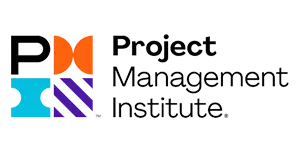How Lean and Six Sigma are Used in the Transportation Industry

Lean and Six Sigma can be used in virtually any industry. Many transportation companies are using them to improve the operations of their supply chain. Lean focuses on reducing waste, while Six Sigma is about reducing mistakes. Here’s how.
PDCA
PDCA, which stands for Plan-Do-Check-Act, is an integral part of Lean management. This four-step iterative approach where processes, products and services are continually improved.
Here is the breakdown of the steps in PDCA:
- Plan: The team defines the problem and objectives clearly and concisely. They also come up with solutions and prioritize the ones they believe will help them resolve the issue and complete the objectives.
- Do: The team implements a solution on a micro level and measures its impact on the problem. This small-scale implementation allows the team members to validate their assumptions before full-scale implementation.
- Check: Results of the small-scale implementation are measured against objectives, allowing the team to see if the solution is working and if they can improve it further.
- Act: The team fully implements the most effective solution. They then document and standardize the procedures used during the implementation. Doing this allows the organization to sustain the improvement and guide future improvement projects.
Let’s suppose a trucking company has noticed that their deliveries are running late on a particular route. During the Plan phase, they can look into alternative routes. A few trucks can try taking these alternative routes to see if their delivery times have improved. During Act, the company can select the route with the shortest time to be the official one.
DMAIC
DMAIC, or Define, Measure, Analyze, Improve, Control, is at the heart of Six Sigma. It is a data-driven approach to eliminating costly variations in business processes. The steps of the DMAIC can be broken down as follows.
- Define: The team defines the problem, sets goals and identifies improvement opportunities.
- Measure: The current performance of the process is measured. This allows the team to collect the necessary data to benchmark the process and compare it with future improvements.
- Analyze: The team then analyzes the data, delving deeper to uncover the root cause of the problem. They conduct a root cause analysis using tools like the 5 Whys and fishbone diagram.
- Improve: The root cause is then addressed and eliminated using all the data collected and analyzed thus far. An implementation plan is developed and deployed.
- Control: The improvements are controlled to prevent the process from reverting to its old state. This requires making sure the changes that work have been institutionalized. A monitoring plan is also developed, implemented and standardized.
DMAIC can also be used for route optimization by a trucking company. DMAIC can eliminate unnecessary routes to deliver goods faster, which means the process will require less time and fuel to complete. Furthermore, it can increase customer satisfaction.
Conclusion
As you can see, both Lean and Six Sigma can be used to improve processes in the transportation industry. It is not only the manufacturing industry, where these methodologies originated, where they can play a role. By using them effectively, the transportation industry can cut costs and increase profits.
SixSigma.us offers both Live Virtual classes as well as Online Self-Paced training. Most option includes access to the same great Master Black Belt instructors that teach our World Class in-person sessions. Sign-up today!
Virtual Classroom Training Programs Self-Paced Online Training Programs







